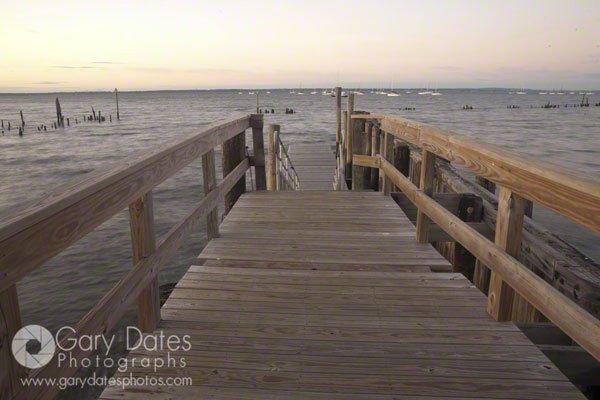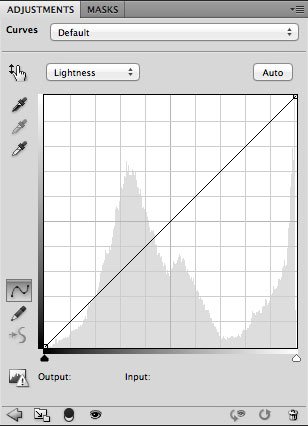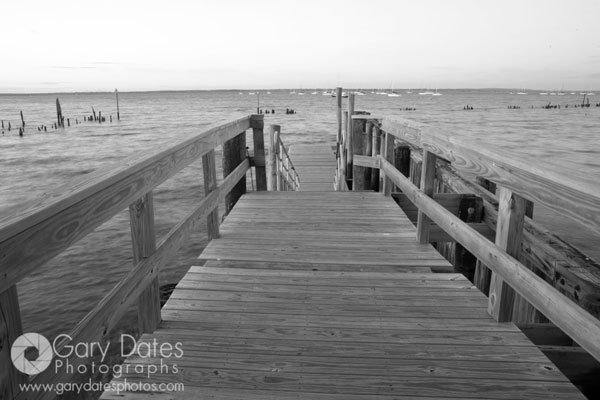The Best Space For Color in Photoshop
Ah, yes. It’s a new year, and time for this young man to turn his thoughts to color (I have no life). But seriously, if you care at all about Photoshop, and want a super-easy way to improve the color of just about any photo, you owe it to yourself to check out the L.A.B. color space.
Don’t get me wrong; there is very little about LAB color that is “super-easy”, but if I didn’t characterize it thus, you probably wouldn’t have clicked on the jump to read the rest of this article. However, the good news is, I really AM gonna show you a very easy way to improve your photos! If you then want to continue on and learn about how amazingly powerful the LAB color space is, well, you won’t be disappointed…..but you won’t find it easy either. Regardless, this article just scratches the surface of LAB, but even THAT is enough to give you a very powerful tool in your image-editing arsenal.
Can You Say “L.A.B”?
First things first……I started this article by typing “L.A.B.”, but quickly gravitated to “LAB.” For the record, you should say the letters, as in “el aye bee”, and NOT say the word “lab.” That’s because “L” stands for luminosity or lightness, “A” stands for…..er….A, and “B” stands for, ummmm, B. These 3 letters represent channels, like in RGB where we have the Red, Green, and Blue channels. Since we say “ar gee bee” for RGB, we should say “el aye bee” for LAB, damnit…..but I digress.
In the RGB Color Space, the 3 channels contain the luminance levels for each of the 3 colors. Look at this photo of a red cowapple:
Now look at the 3 channels as separate images:
As you can see, the Red Channel on the left has the brightest image. This makes sense because the cowapple is mostly red, so the Red Channel is the brightest. Neither the Green nor Blue Channels have much color info, so they do not have as much brightness, or luminance. Photoshop combines these three channels to create the color image that we humans see. As an aside, Photoshop (unlike its little brother Elements) give us direct access to Channels. We can copy them, edit them, etc. The ability to access channels gives us super powers. We become super heroes of Photoshop….but that is a discussion for another day.
Anyway….if you’re still with me, unlike every other color space inside of Photoshop, the LAB color space totally separates out the luminance data from the color data. ALL of the luminance, or brightness info is in the “L” channel. Therefor the “L” channel looks like a black and white photo…….which makes sense because there is no color information in it at all. As a result, think of the L channel as a channel for contrast. The A Channel contains Green vs Magenta info, and the B Channel contains Blue vs Yellow data. I use the term “vs” because the A and B Channels control the 2 colors inside them at the expense of each other. So in the A Channel, if you increase Magenta you decrease Green. Likewise, in the B Channel if you increase Yellow you decrease Blue.
If none of that makes sense, for now just know this: the L Channel handles luminance, and the A & B Channels handle color. OK? Because of this, the LAB Color Space is very good at separating colors from each other, which to us can just look like more saturation. With that in mind, here is a super-easy way to use the LAB Color Space to improve an image. There is one caveat. It works best on images that do NOT have a lot of color separation; meaning, images that are relatively neutral or have muted colors. If you have an image with lots of vivid colors, you won’t need the LAB Color Space anyway. OK….here we go.
Look at this fairly muted photo:
This is a good candidate for some LAB editing. Try and find one of your own images that is sort of neutral-y or has muted tones, open it and follow along. The first step is to convert the image from RGB to the LAB Color Space. You do that under the Image Menu under Mode, which is the first option in that menu. Simply choose “Lab Color” and your now in LAB. The image will look exactly the same. Now, you must create a Curves Adjustment Layer. If you’ve never used curves and have been afraid of them, there is very little that follows that will allay your fears. It is beyond the scope of this article to explain the awesome power of Curves adjustments. Happily, you don’t need to know anything about Curves….you just need to follow my instructions to-the-letter. Now, take your right hand and place it over your head such that you can grab your left ear……OK…..just kidding.
The Dreaded Curves Adjustment
 To create a Curves Adjustment Layer, you can either go to the “Layer” menu, choose “New Adjustment Layer”, and choose “Curves…” from the fly-out menu. Or, in the Layers panel, down at the bottom there’s a black and white circle. Click and hold on that, and choose “Curves…” from the pop-up menu. Either way, you’ll have created a new Adjustment Layer above your image layer. Your Adjustment Panel should look like the one at the right. If you DON’T see this, go to the Window menu and choose “Adjustments”. OK. Notice that there’s a popup menu that currently says “Lightness”. This is the “L” channel. You can apply a curve to this channel.
To create a Curves Adjustment Layer, you can either go to the “Layer” menu, choose “New Adjustment Layer”, and choose “Curves…” from the fly-out menu. Or, in the Layers panel, down at the bottom there’s a black and white circle. Click and hold on that, and choose “Curves…” from the pop-up menu. Either way, you’ll have created a new Adjustment Layer above your image layer. Your Adjustment Panel should look like the one at the right. If you DON’T see this, go to the Window menu and choose “Adjustments”. OK. Notice that there’s a popup menu that currently says “Lightness”. This is the “L” channel. You can apply a curve to this channel.
Before we do so, let’s look at what that channel actually looks like. Down in your Layers panel, you should see another tab labeled “Channels”. If you DON’T see it, go up to the Window menu and choose “Channels.” It will look like the one at right. Notice there are, well, 3 Channels! The first one isn’t really a channel. It is called “Lab.” I hate Adobe for spelling it this way, because everyone is gonna be saying “Lab”, instead of “el aye bee”, thereby foiling my plan to conquer earth. Regardless, this is the composite that produces the color image we see……it is the sum of all 3 channels, and exists solely for our benefit, so we can see the color image. Now, either click on the “Lightness” channel or hit command-3 (mac) control-3 (Windows). You are now looking at the Lightness channel alone, and the image appears black and white. The fact is, you are looking at the Luminance, or Brightness (Lightness…..geez), data inside of the image. Here’s a news flash: A black and white image is NOTHING BUT brightness values, or tones. There is no color, but there is a ton of tonal variance inside of a B&W image. This is a good thing too, because if there weren’t, there would be a very dull, gray, black, or white rectangle. It is the TONAL VARIANCE, or varying levels of brightness, that creates image detail…..period.
If you DON’T see it, go up to the Window menu and choose “Channels.” It will look like the one at right. Notice there are, well, 3 Channels! The first one isn’t really a channel. It is called “Lab.” I hate Adobe for spelling it this way, because everyone is gonna be saying “Lab”, instead of “el aye bee”, thereby foiling my plan to conquer earth. Regardless, this is the composite that produces the color image we see……it is the sum of all 3 channels, and exists solely for our benefit, so we can see the color image. Now, either click on the “Lightness” channel or hit command-3 (mac) control-3 (Windows). You are now looking at the Lightness channel alone, and the image appears black and white. The fact is, you are looking at the Luminance, or Brightness (Lightness…..geez), data inside of the image. Here’s a news flash: A black and white image is NOTHING BUT brightness values, or tones. There is no color, but there is a ton of tonal variance inside of a B&W image. This is a good thing too, because if there weren’t, there would be a very dull, gray, black, or white rectangle. It is the TONAL VARIANCE, or varying levels of brightness, that creates image detail…..period.
The “Lightness” or “Luminance” Channel (take your pick)
Look at the image below. It is, in fact, the “Lightness” channel in the L.A.B. color space:
As I said earlier, this channel is unique to el-aye-bee. It contains ALL of the luminance information in the photo. The other to channels, the “A” and “B” channels, contain color information only. In RGB, all 3 channels contain luminance data. The fact is, L.A.B. and RGB are about as different as they can be, and to truly understand WTF is going on in the L.A.B. color space, you have to completely alter your view of channels. Happily, THAT discussion is also beyond the scope of this article.
Back to matters at hand. Just so you can see for yourselves, this is what the “A” and “B” channels look like:
As you can see, there is almost no detail in either channel. That is because, as I’ve already pointed out, they contain COLOR data only. Sooooooooo, once again and to beat this horse to death, L.A.B. is the only color space that separates detail and color. this turns out to be a very good thing, and makes L.A.B. very powerful, but….you guessed it….that’s beyond the scope of this article.
Get To The POINT Already!!!!!
 The point…..ah yes. I did say I was gonna show you an easy way to use the L.A.B. color space didn’t I? Yup…..so no more explanations. Go back to your own Curves Adjustment panel and make sure it is set to the Lightness channel and make yours look close to what you see at right. You should see an immediate improvement in your image…..less muddy, more clarity and contrast. What you DON’T see, which you will see in any other color space in which you create an “s” curve to increase contrast in the Master channel, is an increase in saturation. That is because….and I’ll say it again….L.A.B. separates luminance data from color data, so you can increase contrast without effecting color tones at all…..pretty nifty I say! Alright, we’re finished with the Brightness Channel.
The point…..ah yes. I did say I was gonna show you an easy way to use the L.A.B. color space didn’t I? Yup…..so no more explanations. Go back to your own Curves Adjustment panel and make sure it is set to the Lightness channel and make yours look close to what you see at right. You should see an immediate improvement in your image…..less muddy, more clarity and contrast. What you DON’T see, which you will see in any other color space in which you create an “s” curve to increase contrast in the Master channel, is an increase in saturation. That is because….and I’ll say it again….L.A.B. separates luminance data from color data, so you can increase contrast without effecting color tones at all…..pretty nifty I say! Alright, we’re finished with the Brightness Channel.
The “a” Channel”
 Click on the popup menu that currently says “Brightness”, and choose “a”. Make the curve in your “a” channel look like the one at right, by first grabbing the point in the lower left corner and dragging it straight to the right, until the “input” box at the bottom reads “-90”. Now take the upper right point and drag it straight to the left until the input box reads “90”. The key here is to move the upper right point to the left by the EXACT amount you moved the lower left point to the right. By doing so, you ensure that the curve, which is a straight line at this point, is exactly crossing the middle of the box. You don’t need to know why, but I’ll tell you anyway…..you have prevented a color shift and simultaneously increased saturation in the “a” channel. Got it?
Click on the popup menu that currently says “Brightness”, and choose “a”. Make the curve in your “a” channel look like the one at right, by first grabbing the point in the lower left corner and dragging it straight to the right, until the “input” box at the bottom reads “-90”. Now take the upper right point and drag it straight to the left until the input box reads “90”. The key here is to move the upper right point to the left by the EXACT amount you moved the lower left point to the right. By doing so, you ensure that the curve, which is a straight line at this point, is exactly crossing the middle of the box. You don’t need to know why, but I’ll tell you anyway…..you have prevented a color shift and simultaneously increased saturation in the “a” channel. Got it?
The “b” Channel
 Now choose the “b” channel in the curves adjustment panel and make it look like the one at right by doing exactly what you did to the “a” channel. If you take a look at your image, I think you’ll see a huge improvement in the quality of the image!!
Now choose the “b” channel in the curves adjustment panel and make it look like the one at right by doing exactly what you did to the “a” channel. If you take a look at your image, I think you’ll see a huge improvement in the quality of the image!!
The fact is, by being able to separately control luminance and color, you get MUCH better results that are subtler, yet you can get much more saturation as well! In the LAB color space you can get MUCH more saturation in your colors that actually look realistic. OK. We’re almost done. Wouldn’t it be great if you could save this setting and use it on other images? You bet it would, and in fact, you can. In CS5, in the very upper-right corner of the Curves Adjustment panel, there live s a tiny little icon thingy that looks like this:![]() Click on it, and you’ll see a big fly-out menu with a bunch of options. Go to “Save Curves Preset…”. In the resulting dialog box, name your awesome new curve something like “LAB basic”, and click “Save”. In earlier versions of Photoshop, that “Save Curves Preset…” option is accessed elsewhere in the Adjustment Panel. Look hard enough and you’ll find the right “thingie” to click. Sorry, but I don’t remember earlier versions. Regardless, once you’ve saved this setting, you can then load it into the Curves Adjustment Panel in another LAB image by choosing “Load Curves Preset…” and clicking on the one you saved previously.
Click on it, and you’ll see a big fly-out menu with a bunch of options. Go to “Save Curves Preset…”. In the resulting dialog box, name your awesome new curve something like “LAB basic”, and click “Save”. In earlier versions of Photoshop, that “Save Curves Preset…” option is accessed elsewhere in the Adjustment Panel. Look hard enough and you’ll find the right “thingie” to click. Sorry, but I don’t remember earlier versions. Regardless, once you’ve saved this setting, you can then load it into the Curves Adjustment Panel in another LAB image by choosing “Load Curves Preset…” and clicking on the one you saved previously.
It’s About Results
Here, once again, is the unaltered image shown above:
And here is the same image after the Curves Adjustment layer has been edited as above:
Notice the subtle increase in saturation as well as contrast. The water is now picking up the reflection of the pinkish sky, the right wooden railing is reflecting the warm light from the setting sun, the red paint on that one floor board in the lower third of the frame is more vivid, etc. I think we can all agree this is an improvement.
But I Can Get the Same Results in RGB!
Really? No, not really. Here’s why. If you apply an “s” curve to the master RGB composite channel, not only will you increase contrast, you’ll simultaneously increase saturation. The problem with this is you have no control over the relationship between the increase in contrast + saturation. If you try to get as much saturation as I got in L.A.B., you will introduce too much contrast. If you start screwing around with curves in the separate R,G, and B channels, you are most definitely adding a color shift, and if you don’t know what you’re doing, you are most definitely creating a big mess.
As difficult as L.A.B. is to master (and I do NOT claim mastery), the simple Adjustment Curve we created above will very quickly get you good results. Will it work on every image? Of course not. I already explained that it is mostly for images with low color contrast. Even with those, you will need to tweak it based on the image. Beware of ANYONE who tries to give you a blanket formula in Photoshop!! Every image is different, and requires different processes to get better results. Please understand that the Adjustment Curve we created above is a STARTING POINT!
Conclusion
I know at least some of you are thinking, “I can get the same results using Lightroom or ACR (Adobe Camera Raw). I will say that, yes, you can get damn close. If you increase Vibrance for more saturation, increase Clarity and Blacks for more contrast, and then go to the HSL sliders and selectively boost color saturation and even brightness, you’ll get something very similar. However, based on what I just described, I’ll be making at least 4 moves in Lightroom or ACR. If I open the image in Photoshop, I just convert to L.A.B., add a curves adjustment layer and load the setting I saved. That’s 2 moves, so it’s easier. But more importantly, since L.A.B. has separate channels for contrast and color, I KNOW I am not in anyway shifting color by using the curve we created above. I may be increasing saturation, but I’m doing it in a very subtle but uniform way.
Since I shot the image above, I can tell you that the results I got from the LAB curves adjustment was much closer to what I saw when standing there. The fact is, all digital cameras desaturate to some degree, and also create flatter images. Since I shoot in RAW, I am very comfortable increasing blacks to get both more contrast and saturation, maybe bumping up Exposure to compensate for the increased blacks, maybe increasing vibrance, and then clarity. This almost always gets me good results.
However, having discovered the power of the L.A.B. color space, I am getting better results FASTER by simply doing what we did above! I am still learning about L.A.B. I’m no expert. Yet, so far I’m very impressed with the flexibility and power that comes with working in an L.A.B. color space. I did not write this article to impress y’all with my knowledge of L.A.B., because I don’t have much knowledge yet. I wrote it to give you an easy way to get started there. Hopefully you can take it from there if you are intrigued by it. I know I am!
Very informative. Thanks for the tutorial.